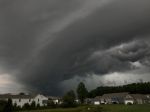This year’s Black Friday deals are impressive: The coupon site Brad’s Deals reports that at Best Buy, you can get a 42-inch LCD television for $200, a Blu-ray player for $40, and a Lenovo laptop for $180. But do those discounts really justify standing in line, in the cold, for hours on Thanksgiving evening, when you could be home watching a movie instead? (This year, many stores plan to open at midnight or earlier on Thanksgiving instead of in the early morning hours on Friday.)
Telling shoppers to avoid sales might sound hypocritical coming from someone who has reported on the best deals and discounts out there. But there are some very good reasons why you should turn and walk the other way rather than let yourself be sucked into holiday sale mania. Here are five of them:
Many discounts will continue long after Black Friday is over. While certain so-called “doorbusters” are available for a limited time only (and in limited quantities), many deals will continue throughout the holiday season. (And, in fact, some, such as free shipping at online stories, are often available throughout the year.)
The best deals are only available to a few people. Those doorbusters aren’t available in endless supply, which is why people line up so early in the hopes of being among the lucky few to snag one. While stores vary in how many doorbusters they keep in stock, Best Buy’s ad specifies that stores will sell a minimum of 10 Lenovos for $180, for example. Circulars featuring Black Friday ads often contain information on the number of doorbusters, which helps shoppers gauge how competitive the day will be.
When you do score a discount, it often just leads to more spending. If you’ve ever impulsively bought a muffin to go with your coffee, or surprised yourself by buying a whole new outfit when you meant to get only a shirt, then you will understand why research shows that shopping leads to more shopping.
Shopping can be broken into two phases, researchers say. In the first stage, people question whether they want to make a purchase. When they decide that the pros outweigh the cons, the “buying phase” takes over. “Once that happens, a roller coaster of shopping can begin,” says Uzma Khan, assistant professor of marketing at the Stanford Graduate School of Business and one of the study’s authors. The researchers call the phenomenon “shopping momentum.”
That means shopping sales can have the unintended consequence of leading to even more purchases, including ones that aren’t on sale. Plus, many of the items that aren’t doorbusters aren’t even good deals, which is one reason shoppers should bring their smartphones and use them to compare prices on products before making purchases. (Certain apps, such as Pricegrabber’s, make it easy to scan barcodes and see if a better deal is available elsewhere.)
Courtesy Of Yahoo.com
















